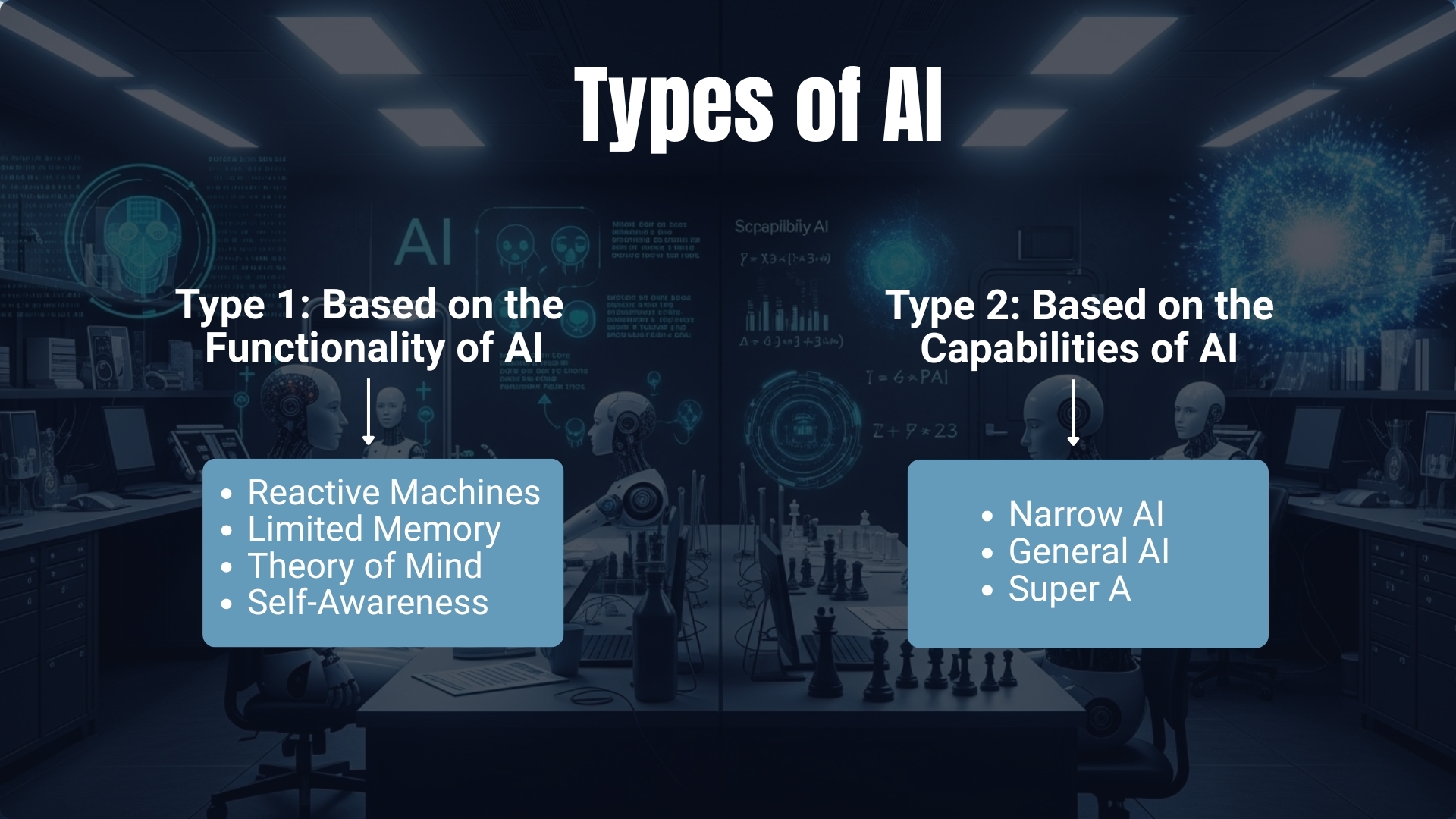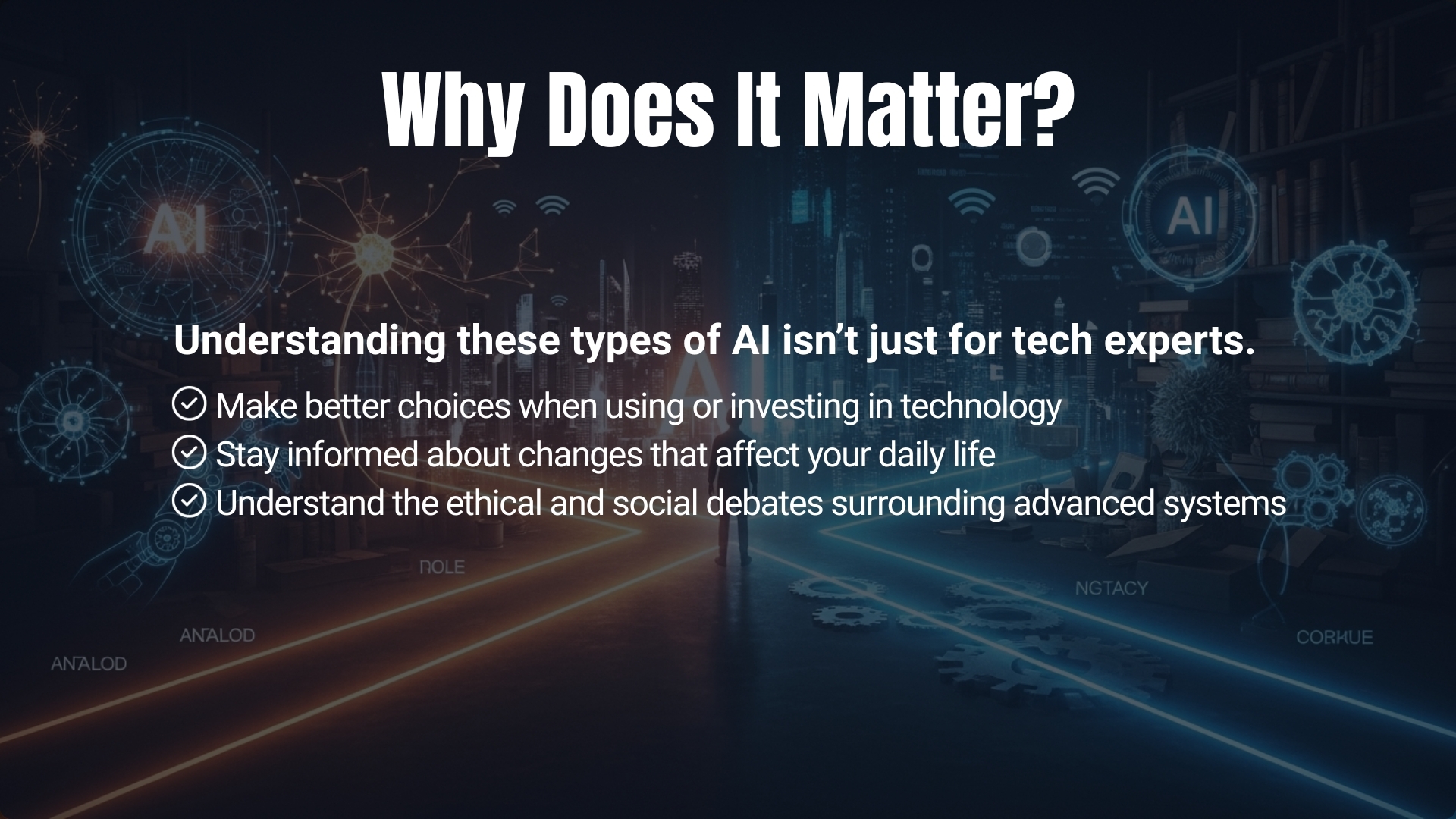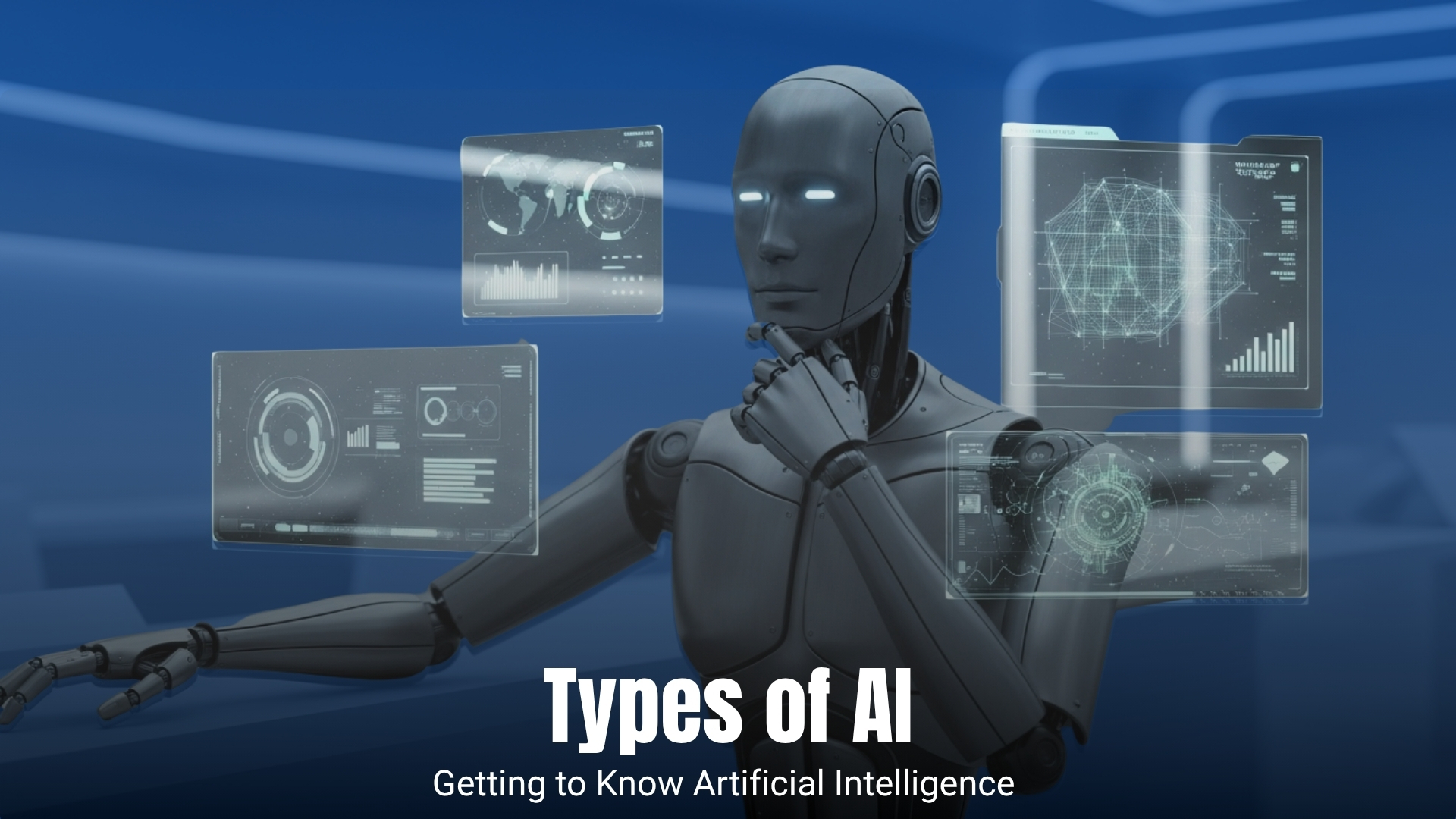Types of AI
We live in a time where machines can answer questions, follow instructions, and even learn from experience. But how do they manage all this? The answer lies in the different types of AI that power today’s smart tools and technologies.
Some systems are built to handle one task well, while others are being developed to think and reason more like humans. Understanding these differences helps us see just how far technology has come and where it's headed next.
In this blog, we’ll explore the types of AI by dividing them into two main groups: one based on how they function and the other based on what they’re capable of doing.
Type 1: Based on the Functionality of AI
This classification focuses on how an AI system works and behaves.
- Reactive Machines
- Limited Memory
- Theory of Mind
- Self-Awareness
Type 2: Based on the Capabilities of AI
This classification focuses on how smart or capable an AI system is in handling tasks.
- Narrow AI
- General AI
- Super AI
Let’s explore both types in detail.

Types of AI Based on Functionality
This type looks at the system’s actions, how it reacts, learns, and adapts over time. It includes four key types:
1. Reactive Machines: The Simplest Form of Intelligence
Reactive machines are the most basic type. They don’t store memories or past experiences. Instead, they respond to specific instructions or situations in real-time. Think of them as machines with tunnel vision; they only focus on the task at hand.
Example:
IBM’s Deep Blue chess computer defeated Garry Kasparov. It could analyse moves but had no understanding beyond the game.
Key Traits:
- No memory
- Task-specific
- Fast but limited
2. Limited Memory: Learning from the Past
Next comes limited memory, a type of system that can refer to historical data to improve future decisions. Most current smart tools fall into this category.
Let’s say you use a navigation app. It tracks traffic patterns, learns your route preferences, and suggests the fastest path. That’s limited memory in action, storing small amounts of past information to predict what’s best for you.
Example:
Self-driving cars. They assess surroundings, track traffic flow, and improve decision-making over time.
Key Traits:
- Can learn from past events
- Improves with time
- Widely used today
3. Theory of Mind: Still in Development
This category isn’t fully developed yet, but it’s a big step toward emotional intelligence in machines. The idea behind the theory of mind is to create systems that understand human thoughts, beliefs, intentions, and emotions.
If developed successfully, these machines could read your mood, adjust responses accordingly, and interact more naturally. They’d become active participants in conversations, not just responders.
While research is ongoing, this level of intelligence remains experimental, but it's a promising direction for the future.
Example:
Not in active use yet, but social robots and advanced conversational systems are aiming toward this.
Key Traits:
- Emotional intelligence
- Social awareness
- Adaptive interactions
4. Self-Awareness: The Ultimate Goal
Imagine a system that’s not just smart but conscious of its existence. That’s what self-aware machines aim to be. This level of intelligence would understand its thoughts, reason independently, and possibly even express emotions.
Right now, this is science fiction. But if ever achieved, it could completely change the relationship between humans and technology. It’s not just a leap in tech, it’s a leap in understanding what intelligence means.
Example:
Currently theoretical, but a major goal in future development.
Key Traits:
- Consciousness
- Independent thinking
- Unpredictable impact
Types of AI Based on Capabilities
This classification explains how powerful and versatile an AI system is. It defines the scope of tasks a system can perform.
1. Narrow Intelligence
Also called “weak,” but not in performance, only in scope. These systems are designed to perform a single task. They can beat grandmasters at chess or suggest your next binge-worthy series, but they can’t do both.
They’re highly efficient, fast, and dominate most of our current applications. Voice recognition, recommendation systems, and image analysis are all based on this.
Example:
Voice assistants, recommendation engines, and face recognition tools.
Key Traits:
- Task-focused
- Very fast and efficient
- No real understanding
2. General Intelligence
This level refers to machines that can think and learn like a human, capable of handling any intellectual task thrown at them. These systems don’t just follow instructions. They understand, reason, and adapt across various fields.
While we’re not there yet, researchers are making strides in developing systems that can move beyond specific tasks.
Example:
Still under development. AGI would allow one system to handle everything from driving to writing and decision-making, without needing to be retrained.
Key Traits:
- Human-level reasoning
- Problem-solving in diverse areas
- Adapts quickly to new situations
3. Super Intelligence
This is the top of the ladder: intelligence that outperforms humans in every aspect. From creativity to problem-solving, it would be smarter and faster than any human. For now, it’s just a concept. But if it ever becomes a reality, it could bring unimaginable changes, both exciting and risky.
Example:
Not yet developed, but the subject of intense debate among researchers.
Key Traits:
- Outperforms humans
- Self-improving
- Potentially unpredictable
Why Does It Matter?

Understanding these types of AI isn’t just for tech experts. Whether you’re a business owner, student, or curious reader, knowing the benefits of artificial intelligence can help you make smarter choices and stay ahead in today’s digital world.
- Make better choices when using or investing in technology
- Stay informed about changes that affect your daily life
- Understand the ethical and social debates surrounding advanced systems
Final Thoughts
The different types of AI are shaping the way we live, work, and connect with the world around us. From basic reactive machines to systems that learn and adapt, each type has a unique role in today’s digital landscape.
As more people and businesses turn to smart solutions, understanding the types of AI is key. Whether you're exploring tech or building a product, the right knowledge gives you an edge.
At WOWinfotech, we stay ahead of these trends to help you create smarter, more efficient solutions using the latest in tech innovation. If you're ready to turn your ideas into intelligent digital experiences, let’s build something great together.
Visit WOWinfotech to learn more about how we can help you grow with the power of technology.
Frequently Asked Questions
1. What are the types of AI?
There are smart systems designed to react, learn from past actions, understand people, and even become self-aware. They also differ based on how many tasks they can handle.
2. What type of data is generative ai most suitable for?
It works best with large sets of text, images, audio, or video to create new content that looks or sounds like the original material.
3. How many types of AI are there?
There are mainly two ways to group them: by how they work (four types) and by how much they can do (three types).
4. What are the types of data in AI?
Data can include text, images, audio, video, numbers, and records;all used to help systems learn, respond, or generate content.
-

Krishna Handge
WOWinfotech
Jul 24,2025
